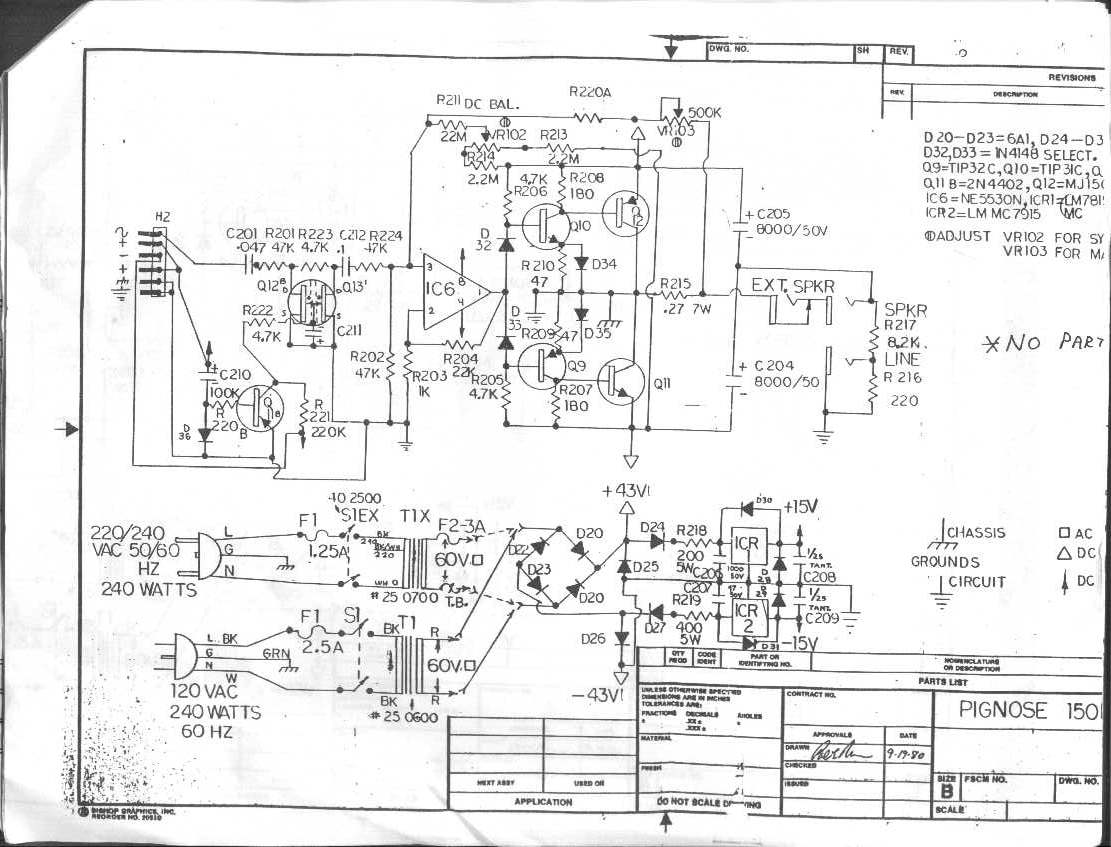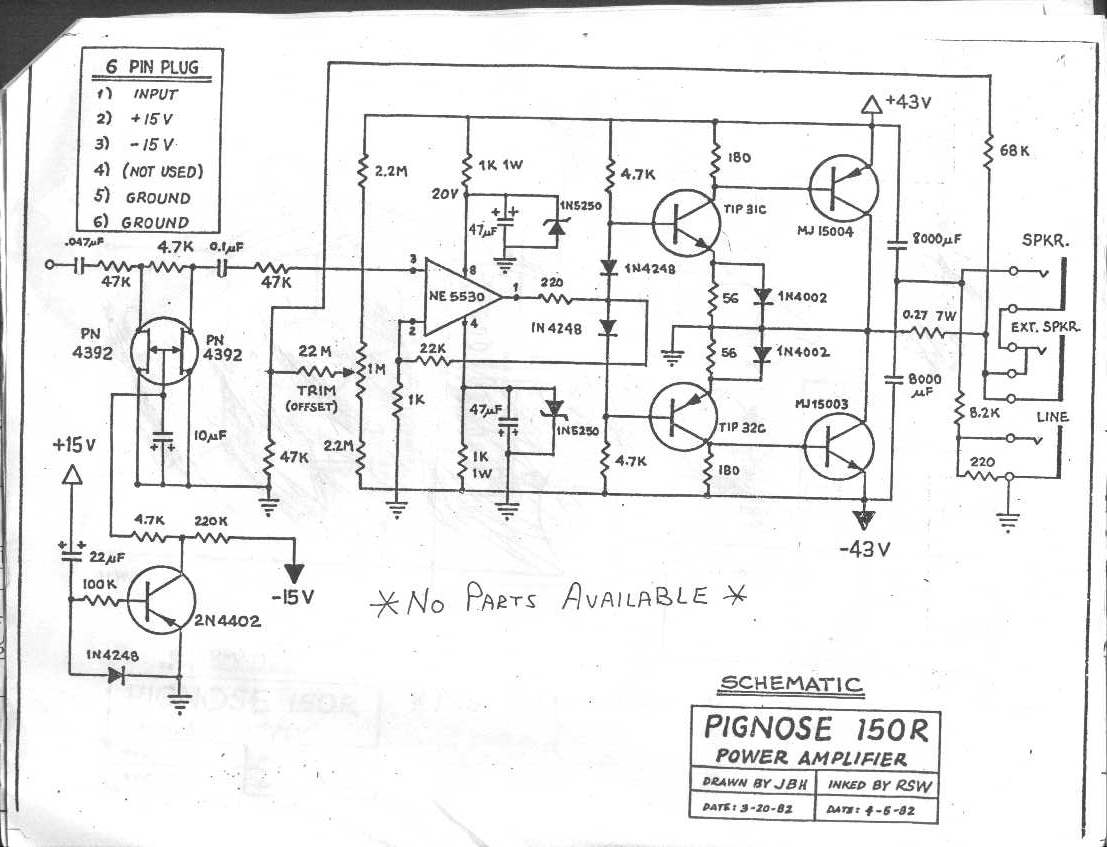hi.
Does anyone have a schematic of a pignose 7-3060 amp.
i have one to repair but not sure if it has correct components looks like been repaired a few times before and some strange transistors, the output stage has 2n6031 and 2n3055 but they are not really a complimentary pair, should be either mj2955 with the 2n3055 or a 2n5631 with the 2n6031,
thanks
Dennis
Does anyone have a schematic of a pignose 7-3060 amp.
i have one to repair but not sure if it has correct components looks like been repaired a few times before and some strange transistors, the output stage has 2n6031 and 2n3055 but they are not really a complimentary pair, should be either mj2955 with the 2n3055 or a 2n5631 with the 2n6031,
thanks
Dennis


Comment